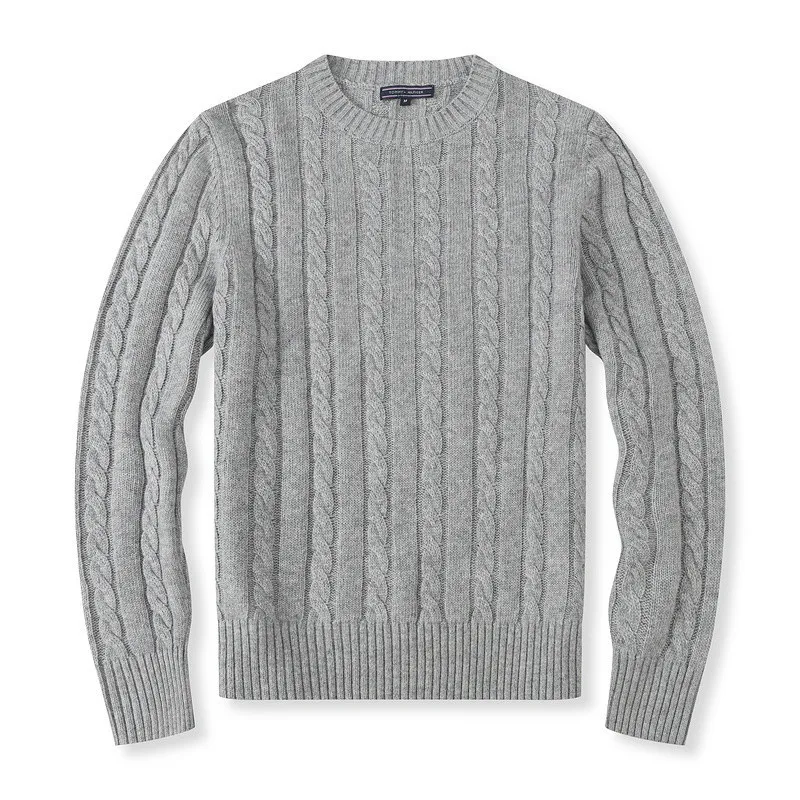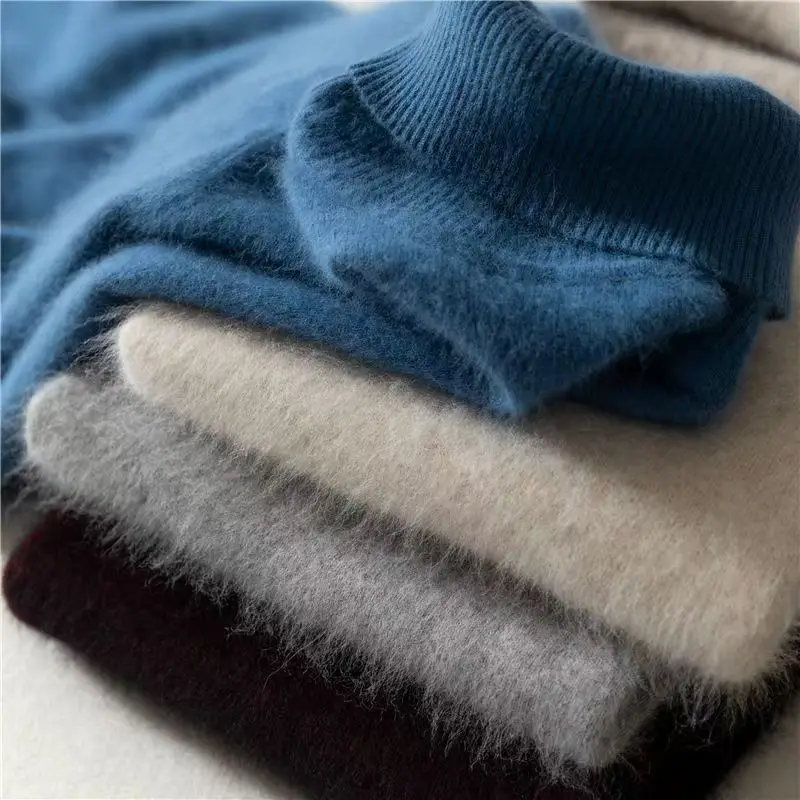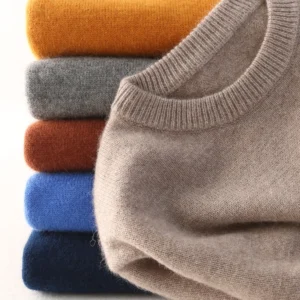Introduction
Cashmere represents the pinnacle of luxury in natural fibers, prized for its incredible softness, warmth, and timeless elegance. Despite its premium status, even the finest cashmere garments can develop those small, fuzzy balls of fiber known as pills. This phenomenon is completely natural and occurs not because of poor quality, but due to the inherent characteristics of the ultra-fine cashmere fibers themselves.
Many cashmere owners become concerned when they first notice pilling, mistakenly believing their investment piece is defective. The truth is that pilling is a normal part of cashmere’s lifecycle, but with proper care and maintenance, it can be significantly minimized and effectively managed.
In this comprehensive guide, we’ll explore both preventative measures and removal techniques to keep your cashmere looking its best for years to come. With the right approach and tools, your cherished cashmere pieces can maintain their luxurious appearance and provide exceptional comfort for over a decade. Understanding various styling tips for cashmere cardigans can also help you appreciate the versatility and longevity of these premium garments while properly caring for them.
Understanding Cashmere Pilling
Pilling occurs when loose fibers on the surface of a fabric tangle together and form small balls or “pills” that sit on the fabric surface. With cashmere, this process happens because the exceptionally fine fibers (typically under 19 microns in diameter) can work their way out of the yarn structure during normal wear.
The science behind pilling involves three main factors: fiber migration, surface friction, and abrasion. As you wear your cashmere garment, the natural movement causes some fibers to work loose. When these loose fibers encounter friction—from rubbing against your body, other clothing, furniture, or even itself in areas like the underarms—they begin to tangle and form the characteristic pills.
Premium cashmere, like the Grade A fibers used in Estate Cloth garments (under 16 microns thickness and exceeding 36mm length), will typically pill less than lower-quality options. Longer fibers stay anchored in the yarn better, while shorter fibers escape more easily and create pills. However, all cashmere will experience some degree of pilling.
Common pilling areas include:
– Underarm regions
– Where sleeves rub against the body
– Areas that contact bags, purses, or backpacks
– The front of the garment where hands frequently touch
– Collar and cuff areas where friction is highest
It’s important to distinguish between normal initial pilling—which often decreases after the first few wears and cleanings as loose fibers work their way out—and excessive pilling that continues unabated, which might indicate lower-quality cashmere. Learning about expert guide preventing cashmere pilling techniques can help you minimize this issue from the start.
Essential Tools for Removing Cashmere Pills
Before diving into specific removal methods, it’s important to understand the array of tools available and how they differ in their approach to pill removal. Each tool offers different benefits in terms of effectiveness, gentleness, and ease of use, making certain options better suited to specific situations or pill severity.
When selecting a tool for your cashmere, you’ll need to balance effectiveness against the risk of damaging the delicate fibers. Unlike robust fabrics that can withstand aggressive removal methods, cashmere requires a more thoughtful approach. The tools we’ll discuss are specifically designed to treat delicate fabrics and differ significantly from general lint removal products that might be too harsh for cashmere. Understanding approaches for preventing and managing cashmere fuzz is also relevant when addressing pilling issues.
Let’s explore the best tools for safely restoring your cashmere to its pill-free glory.
1. Cashmere Combs: Gentle Precision for Delicate Fibers
A cashmere comb is specially designed with fine teeth set at specific distances to gently lift pills away from the fabric without pulling or damaging the base fibers. These combs typically feature metal teeth with rounded tips embedded in a wooden or plastic handle.
How Cashmere Combs Work:
The precision-spaced teeth gently catch and lift the pills above the surface while leaving the intact yarn structure undisturbed. This selective approach makes cashmere combs one of the safest options for your precious garments.
Pros:
– Exceptionally gentle on fine fibers
– Highly controlled application
– No power source needed
– Compact and portable
– Long-lasting tool with no replacement parts
Cons:
– More time-consuming than electric options
– Requires some technique and practice
– May be less effective on severely pilled areas
Proper Technique:
1. Lay your cashmere flat on a clean, firm surface
2. Hold the fabric taut with one hand
3. Gently stroke the comb in one direction only
4. Use light pressure, letting the teeth do the work
5. Clean the comb frequently to remove accumulated pills
6. Work systematically across the garment in small sections
Look for cashmere combs with smooth, polished teeth that won’t snag the fabric. Higher-quality combs often feature precisely machined teeth with consistent spacing and height. If you’re interested in exploring quality cashmere pieces that maintain their appearance longer, our cashmere sweaters collection features garments made with premium-grade fibers.
2. Fabric Shavers: Efficient Removal for Larger Areas
Electric fabric shavers represent a more efficient approach to pill removal, especially for larger garments or more extensive pilling. These battery-powered or rechargeable devices use a rotating blade system housed beneath a protective guard to cut away pills while keeping the base fabric safe.

How Fabric Shavers Work:
The protective mesh guard allows only the raised pills to enter the cutting chamber, where rotating blades trim them away. The guard’s height prevents the blades from reaching the base fabric, protecting your cashmere from damage.
Pros:
– Much faster than manual methods
– Effective on medium to heavy pilling
– Covers large areas efficiently
– Consistent results with less technique required
– Many models offer adjustable settings for different fabrics
Cons:
– Risk of damage if used incorrectly or with aggressive settings
– Requires batteries or charging
– More bulky than manual options
– Can be too aggressive for extremely delicate items
Safe Usage Instructions:
1. Always test on an inconspicuous area first
2. Select the highest guard setting initially (furthest from fabric)
3. Hold the fabric flat and slightly taut
4. Move the shaver in gentle circular motions
5. Empty the lint collection chamber frequently
6. Never press down hard—let the device do the work
7. Work in small sections and check your progress
8. Use only the lowest setting needed for effective results
When purchasing a fabric shaver for cashmere, look for models with:
– Multiple guard height settings
– Sharp, quality blades
– Large surface area of the protective mesh
– Comfortable handling for precision control
– Positive reviews specifically for use on delicate fabrics
3. Sweater Stones: Natural Abrasion Method
Sweater stones offer a natural, traditional approach to pill removal. Typically made from pumice or volcanic rock, these stones use gentle abrasion to remove pills without the cutting action of combs or shavers.
How Sweater Stones Work:
The slightly rough surface of the stone creates friction against pills, effectively “sanding” them away from the fabric surface. The natural porosity of the stone captures the removed pills within its structure.
Pros:
– No moving parts or power required
– Completely natural material
– Excellent control with hand pressure
– Long-lasting with proper care
– No risk of accidental cutting or snagging
– Environmentally friendly option
Cons:
– Requires more physical effort than other methods
– Can be time-consuming for large areas
– May produce fine dust during use
– Less effective on very fine or loose pills
Proper Usage:
1. Lay your cashmere flat on a clean surface
2. Hold the garment taut with one hand
3. Using light to moderate pressure, move the stone in one direction only
4. Work in small sections using short, controlled strokes
5. Periodically clean the stone by rinsing or brushing out collected fibers
6. Allow the stone to dry completely before storing
Sweater stones are particularly effective on brushed cashmere sweaters where the raised surface texture can develop more noticeable pilling. The stone’s gentle action works well with the brushed fiber structure without flattening the desirable texture.
4. Manual Methods: When and How to Use Scissors
While not ideal as a primary method, small scissors can be appropriate for targeting individual, particularly stubborn pills that other methods haven’t fully addressed. This approach requires extreme caution and should be considered a precise, limited intervention rather than a comprehensive solution.
When Scissors Are Appropriate:
– For isolated, large pills that resist other removal methods
– For very delicate areas where other tools might be too aggressive
– As a finishing touch after using other methods
Proper Scissor Technique:
1. Use only small scissors with rounded tips (embroidery scissors work well)
2. Never pull the pill away from the fabric while cutting
3. Hold the fabric absolutely flat and taut
4. Clip the pill at its base, parallel to the fabric surface
5. Work in excellent lighting to clearly see what you’re cutting
6. Take your time—this is precision work, not bulk removal
Risks to Avoid:
– Never use regular household scissors with sharp points
– Avoid cutting multiple pills at once
– Never cut when the fabric is folded or bunched
– Don’t attempt this method when tired or in poor lighting
– Stop immediately if you notice any damage to the base fabric
Remember that any cutting method risks damaging the underlying fabric if done incorrectly. When in doubt, return to gentler methods or consider professional care.
5. Methods to Avoid: Protecting Your Investment
Not all pill removal approaches are suitable for cashmere. The following methods might work for sturdier fabrics but can cause significant damage to your luxury cashmere pieces:
Adhesive Lint Rollers
These sticky sheets can pull and stretch the delicate cashmere fibers, potentially creating more pilling problems than they solve. The adhesive may also leave residue that attracts dirt.
Standard Razors
While some suggest using facial razors, these lack the protective guards of fabric shavers and can easily cut the base fabric, creating irreparable holes or thin spots.
Velcro Curlers
Though sometimes recommended as a DIY solution, the aggressive hooks on Velcro can catch and tear cashmere fibers, causing more damage than pilling.
Aggressive Brushing
Standard clothing brushes with stiff bristles can be too harsh for cashmere, breaking fibers and creating more loose ends that will form new pills.
Masking/Packing Tape
Similar to lint rollers but even more aggressive, tape can seriously damage the surface of your cashmere by pulling out intact fibers along with the pills.
If you’re looking for safe, effective approaches to maintaining your luxury knitwear, our ultimate guide to cashmere pill removal provides additional proven techniques that won’t harm your garments.
Comparison: Finding Your Ideal Cashmere Pill Removal Tool
When selecting the right tool for your cashmere care routine, consider the specific characteristics of your garment and the extent of pilling you’re addressing. This comparison will help you make an informed decision:
| Tool | Effectiveness | Gentleness | Speed | Learning Curve | Cost Range | Travel-Friendly |
|---|---|---|---|---|---|---|
| Cashmere Comb | Medium-High | Excellent | Slow | Moderate | $15-30 | Excellent |
| Fabric Shaver | High | Good (with care) | Fast | Low | $15-50 | Good |
| Sweater Stone | Medium | Very Good | Medium | Low-Moderate | $8-15 | Excellent |
| Scissors | Low (targeted) | Variable | Very Slow | High | N/A (household item) | Good |
For a complete cashmere care toolkit, consider investing in both a quality cashmere comb for routine maintenance and a well-reviewed fabric shaver with multiple settings for more extensive pill removal needs. A sweater stone makes an excellent addition for travel or touch-ups.
The frequency of needed pill removal will depend on:
– How often you wear the garment
– Activities performed while wearing
– The specific cashmere quality
– How well you follow preventative measures
For most quality cashmere pieces with proper care, pill removal might be needed every 5-10 wears initially, decreasing to occasional maintenance once loose fibers have been addressed.
Preventing Pilling: Proactive Cashmere Care
While effective removal techniques are valuable, preventing pills from forming in the first place is the optimal approach for maintaining your cashmere’s luxurious appearance. A thoughtful prevention strategy can dramatically reduce pill formation and extend your garment’s life.
The following sections outline a comprehensive approach to cashmere care, from washing through storage and wearing habits. By incorporating these practices into your routine, you’ll not only minimize pilling but also preserve the exceptional softness and appearance that make cashmere so desirable.

Let’s explore how simple adjustments to your care routine can yield remarkable results in maintaining your mens cashmere pullovers and other fine cashmere garments.
1. Proper Washing Techniques for Cashmere
Washing is perhaps the most critical aspect of cashmere care, as improper cleaning can significantly increase pilling while proper methods actually help reduce it.
Hand Washing (Preferred Method):
1. Fill a clean basin with lukewarm water (never hot)
2. Add a small amount of mild cashmere shampoo or baby shampoo
3. Gently submerge the garment without wringing or twisting
4. Soak for 5-10 minutes, occasionally pressing gently
5. Drain the soapy water and refill with clean, cool rinse water
6. Continue rinsing until water runs clear with no soap bubbles
7. Press water out gently without wringing or twisting
Machine Washing (When Necessary):
1. Use a front-loading machine only (top-loaders with agitators will damage cashmere)
2. Place the garment in a mesh laundry bag
3. Select cold water and the gentlest cycle available
4. Use a specialized wool/cashmere detergent
5. Skip the spin cycle if possible, or select the lowest spin setting
6. Remove promptly when the cycle ends
Detergent Considerations:
Look for pH-neutral cleaners specifically formulated for wool and cashmere. These products clean effectively while preserving the natural lanolin that helps prevent pilling. Regular detergents are often too alkaline and strip this protective element.
Washing Frequency:
Cashmere doesn’t need frequent washing. Typically, 3-5 wears between cleanings is appropriate unless the garment is soiled. Over-washing can accelerate fiber breakdown and pill formation.
2. Drying and Reshaping Your Cashmere
The drying process is equally important in preventing pilling, as improper techniques can stress and break fibers.
Optimal Drying Process:
1. Never wring or twist the wet garment
2. Lay the cashmere on a clean, white towel
3. Gently roll the towel with the garment inside to absorb moisture
4. Unroll and transfer to a fresh, dry towel
5. Reshape the garment to its proper dimensions while damp
6. Lay flat to dry away from direct heat or sunlight
7. Allow to dry completely before storing or wearing
Reshaping Techniques:
– Gently stretch sleeves to their proper length
– Align seams and smooth them flat
– Ensure shoulders sit squarely
– Measure against a similar unwashed garment if needed
Critical Drying Mistakes to Avoid:
– Never hang wet cashmere (the weight will stretch and distort the garment)
– Avoid direct heat sources like radiators, hair dryers, or sunny windows
– Don’t place on colored towels that might transfer dye
– Never use a clothes dryer, even on low heat settings
Proper layering tips for cashmere cardigans can also help you wear your garments in ways that reduce stress on the fibers and minimize pilling risk.
3. Strategic Storage Solutions
How you store your cashmere when not wearing it significantly impacts pill formation. Proper storage minimizes fiber stress and protects against external damage factors.
Ideal Folding Technique:
1. Button or zip any closures
2. Fold sleeves back, aligning with the body of the garment
3. Fold in half or thirds horizontally
4. Avoid sharp creases which stress fibers at fold points
Storage Containers:
– Breathable cotton storage bags are ideal
– Cedar elements help repel moths naturally
– Acid-free tissue paper can be used between folds for very delicate items
– Never store in plastic, which can trap moisture and promote mildew
Seasonal Storage Preparation:
1. Clean garments thoroughly before long-term storage
2. Ensure they are completely dry
3. Add cedar blocks or lavender sachets as natural moth deterrents
4. Store in cool, dry locations away from direct sunlight
5. Check periodically during storage for any issues
Understanding effective approaches to protecting cashmere from moth prevention is essential for long-term storage success, particularly between seasons.
4. Mindful Wearing Habits
How you wear your cashmere directly affects pill formation. Simple adjustments to your habits can dramatically reduce pilling.
Friction Reduction Strategies:
– Avoid carrying shoulder bags or backpacks when wearing cashmere
– Consider wearing a scarf to protect the neck area of sweaters
– Minimize contact between your cashmere and rough surfaces like desk edges
– Be conscious of repetitive arm movements that cause underarm friction
Effective Layering:
– Wear a light base layer under cashmere to reduce direct skin contact
– Choose smooth outer layers that won’t create friction against your cashmere
– Consider wearing a lightweight blouse under cashmere sweaters
Rotation Practices:
– Allow at least 24 hours of rest between wearings of the same item
– This rest period allows fibers to recover their natural resilience
– Maintain multiple cashmere pieces to create a healthy rotation

Post-Wear Care:
– Brush cashmere gently with a soft clothes brush after wearing
– Address any soil spots immediately before they set
– Allow worn garments to air before folding and storing
Cashmere Wrap Sweaters, Women's Cashmere Pullovers
$75.89 Select options This product has multiple variants. The options may be chosen on the product pageCashmere Cable Knit Sweaters, Women's Cashmere Pullovers
Price range: $111.82 through $112.93 Select options This product has multiple variants. The options may be chosen on the product pageCropped Cashmere Sweaters, Women's Cashmere Pullovers
$155.77 Select options This product has multiple variants. The options may be chosen on the product pageOversized Cashmere Sweaters, Plus Size Cashmere Sweaters, Women's V-Neck Cashmere Sweaters
$136.87 Select options This product has multiple variants. The options may be chosen on the product pageStriped Cashmere Sweaters, Women's Cashmere Pullovers
$139.68 Select options This product has multiple variants. The options may be chosen on the product pageMen's Cashmere Pullovers, Men's V-Neck Cashmere Sweaters
Price range: $90.79 through $96.98 Select options This product has multiple variants. The options may be chosen on the product page
Advanced Care: Revitalizing Older Cashmere
Even with the best care, older cashmere pieces may need special attention to restore their original beauty. These techniques can help rejuvenate well-loved garments:
Gentle Reshaping for Stretched Areas:
1. Dampen the specific area that needs reshaping
2. Gently manipulate back to desired dimensions
3. Allow to dry flat with light weights if needed to maintain shape
Addressing Shine from Wear:
Light steam held several inches away from the fabric (never touching) can help restore the matte finish to areas that have developed shine from repeated wear.
Refreshing Vintage Pieces:
1. Soak in cool water with a gentle wool wash containing lanolin
2. This helps restore moisture and natural oils to older fibers
3. Dry carefully and reshape as needed
Professional Reweaving:
For treasured pieces with actual holes or serious damage, professional reweaving services can repair the knit structure using matching yarns. This specialized service is worth considering for heirloom-quality pieces.
Our collection of women’s cashmere turtlenecks includes pieces crafted with longevity in mind, demonstrating how quality construction contributes to garment lifespan.
Frequently Asked Questions About Cashmere Pilling
Does pilling mean my cashmere is poor quality?
No, pilling is a natural characteristic of all cashmere. Even the finest quality cashmere will develop some pills, particularly during initial wears. Premium cashmere may pill less and respond better to proper care, but the presence of pills alone is not an indicator of poor quality.
How often should I de-pill my cashmere garments?
For new garments, you may need to remove pills after the first 2-3 wears as loose fibers work their way out. After this initial breaking-in period, most quality cashmere will require pill removal much less frequently—perhaps every 5-10 wears depending on how and where you wear the garment.
Can I use regular lint rollers on cashmere?
Traditional adhesive lint rollers are not recommended for cashmere as they can pull and damage the delicate fibers. They remove surface lint but actually contribute to pilling by weakening fiber attachment. Stick with specialized tools designed for fine knits.
Will pilling eventually stop on its own?
Yes, to some extent. Initial pilling is often more pronounced as the shorter, looser fibers work their way out of the yarn. Once these are removed, many cashmere garments will stabilize and pill less frequently, especially with proper care.
Is it worth restoring heavily pilled cashmere?
In most cases, yes. Quality cashmere has excellent fiber integrity underneath those surface pills. Unless the garment has been severely damaged by improper care, restoring even heavily pilled cashmere is usually worthwhile and can return the garment to near-original condition. Learning whether cashmere cardigans are worth investment can help you determine when restoration makes economic sense.
Estate Cloth’s Approach to Pill-Resistant Cashmere
At Estate Cloth, our commitment to exceptional cashmere quality directly relates to pilling resistance. Our selection process focuses on the finest Grade A cashmere with fibers under 16 microns in thickness and exceeding 36mm in length. These longer fibers remain more securely anchored in the yarn structure, significantly reducing pill formation.
Our 12-point quality control process specifically evaluates pilling resistance through standardized testing methods that simulate real-world wear conditions. We select only knits that demonstrate superior performance in these tests, ensuring that our garments maintain their luxurious appearance longer with proper care.
Beyond raw material selection, our construction techniques also contribute to pill resistance:
– Optimal tension during knitting that balances durability with softness
– Strategic yarn twisting that enhances fiber cohesion
– Specialized finishing processes that secure loose fibers
– Reinforcement in high-friction areas
This commitment to quality isn’t just about aesthetics—it’s deeply connected to our sustainability values. Garments that resist pilling and maintain their appearance longer need to be replaced less frequently, reducing overall consumption and environmental impact.
When to Seek Professional Care
While home care methods are effective for routine maintenance, certain situations warrant professional attention:
Consider Professional Cleaning When:
– The garment has significant staining that home cleaning can’t address
– You’re dealing with a very old or heirloom-quality piece
– The fabric shows signs of multiple issues beyond simple pilling
– You’re uncomfortable handling particularly expensive items
Finding a Qualified Cashmere Specialist:
Look for professionals who:
– Specifically mention experience with luxury knitwear
– Use wet-cleaning methods rather than dry cleaning when possible
– Can provide references or examples of previous cashmere work
– Are willing to explain their process in detail
Questions to Ask Professionals:
– What cleaning agents do you use specifically for cashmere?
– How do you handle pill removal on fine knits?
– What methods do you use to prevent shrinkage?
– Do you have experience with vintage cashmere restoration?
Professional services typically cost between $20-50 per garment depending on the service level and location, but this investment can significantly extend the life of quality pieces that might cost hundreds to replace.







